Look, I’ve been knee-deep in performance marketing data for years, and I can tell you one thing for sure – performance marketing has emerged as a cornerstone strategy for businesses aiming to achieve tangible results and maximize ROI. But here’s what really gets me fired up: I’ve seen way too many marketers get caught up in vanity metrics that look impressive in PowerPoint presentations but don’t actually move the needle on revenue.
I remember my first deep dive into performance marketing analytics. I was drowning in data that looked amazing on paper – sky-high click-through rates, impressive reach numbers, tons of engagement. But when the CEO asked the simple question “How much money did this actually make us?” I had nothing. That painful moment taught me to focus obsessively on what actually matters: real business results.
Here’s the thing about performance marketing – it only works if you’re actually tracking what matters. And spoiler alert: most people aren’t. These 25 case studies cut through all the marketing fluff and show you campaigns that actually moved the revenue needle, not just the vanity metrics.
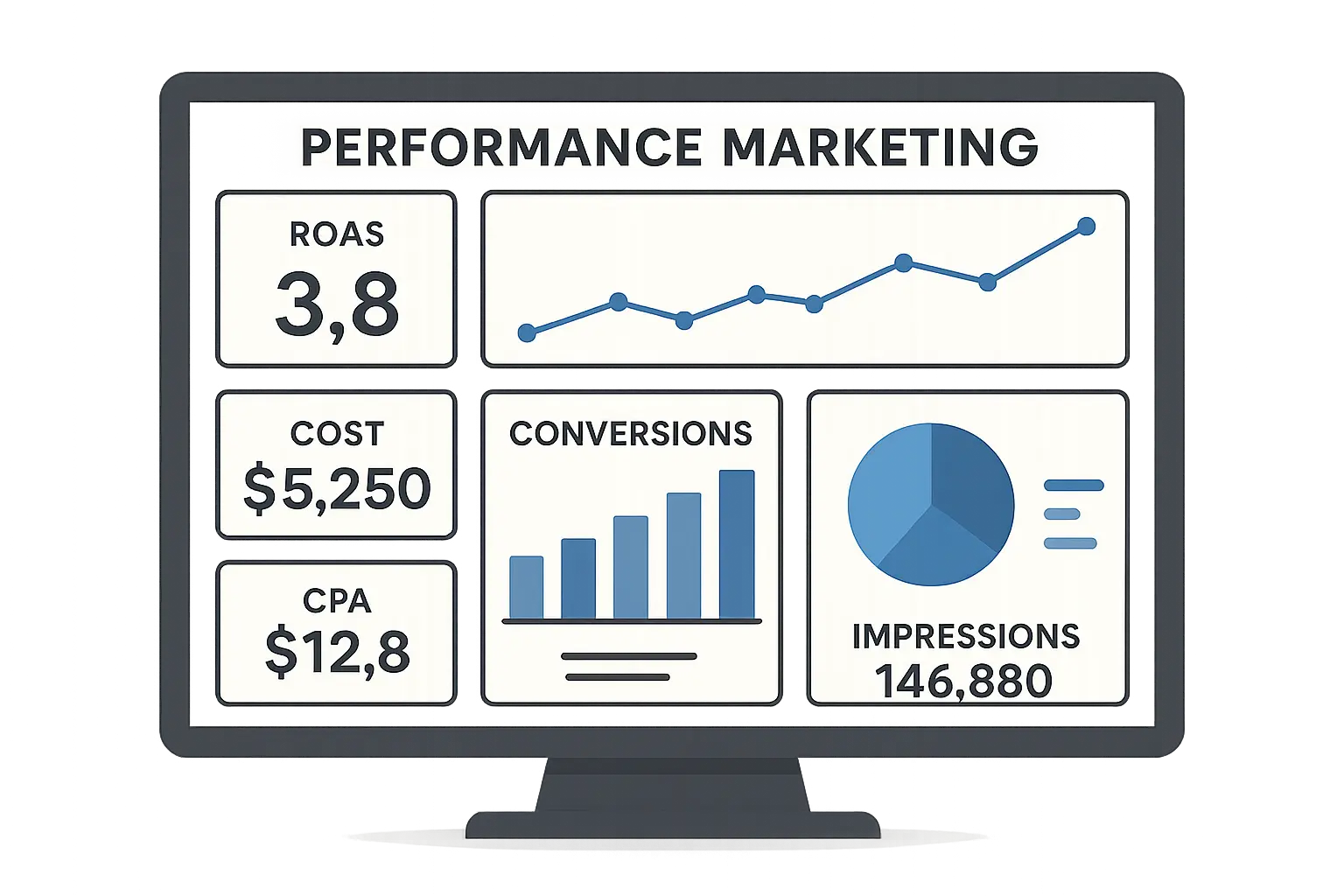
Table of Contents
-
What Makes a Performance Marketing Case Study Worth Your Time?
-
The 25 Case Studies That Changed Everything
-
When Google Ads Actually Work (And Why They Usually Don’t)
-
Social Media Wins That Actually Made Money
-
Email Marketing That Doesn’t Suck
-
Content Marketing That Actually Converts
-
Conversion Rate Optimization That Pays the Bills
-
Finally Understanding Which Marketing Actually Makes Money
-
-
How These Results Stack Up Against Industry Standards
-
Why Most Case Studies Miss the Mark (And How to Spot the Good Ones)
-
Final Thoughts
TL;DR
-
Most case studies are marketing fluff – these ones actually show their work and admit their failures
-
Multi-channel campaigns consistently crush single-channel approaches (but they’re way harder to execute)
-
Privacy changes are killing traditional tracking – the smart money is on first-party data strategies
-
Small conversion rate improvements compound into massive revenue gains over time
-
B2B campaigns take forever to show results, but when they work, they really work
-
User-generated content beats polished ads every single time (your customers are better at selling than you are)
-
AI and automation are game-changers, but only if you feed them good data
What Makes a Performance Marketing Case Study Worth Your Time?
You know those case studies that claim “500% ROI increase overnight!” and make you want to throw your laptop out the window? Yeah, I’ve learned to spot those from a mile away. After getting burned by following advice from flashy case studies that conveniently left out crucial details, I developed my own BS detector.
Here’s what separates the real deal from marketing fairy tales: transparency, honesty about what didn’t work, and enough detail that you could actually try to replicate their results. The best case studies make you feel like you’re getting the inside scoop from someone who’s been in the trenches, not reading a sanitized success story.
The most valuable performance marketing case studies share four things that most others completely ignore. First, they tell you exactly where they started – the ugly baseline numbers that make you wince. Without knowing their starting point, those impressive percentage improvements are basically meaningless.
Understanding proper measurement is crucial, which is why implementing comprehensive GA4 audit practices becomes essential for tracking performance marketing success accurately. (Trust me, I learned this the hard way after spending months optimizing campaigns based on garbage data.)
|
Case Study Quality Factor |
What Good Ones Actually Show You |
Red Flags That Scream “Run Away” |
|---|---|---|
|
Data Transparency |
Ugly starting numbers, exactly how they measured success, realistic timelines |
Vague percentages, no context, conveniently missing baselines |
|
Strategic Alignment |
Clear business goals, actual ROI focus, admission of what didn’t work |
Vanity metrics obsession, unclear objectives, tactics without strategy |
|
Methodology |
Enough data to matter, statistical significance, honest about time invested |
Overnight miracle claims, tiny sample sizes, results that defy physics |
|
Applicability |
Industry context, resource requirements, scalability reality check |
One-size-fits-all advice, missing implementation details, no resource discussion |
Second, they acknowledge that customers don’t convert after seeing one ad. I can’t tell you how many case studies credit all the success to their one brilliant tactic while completely ignoring the email nurture sequence, the retargeting campaigns, and the sales team that actually closed the deals.
Third, they give you enough data volume and realistic timelines. I’m immediately suspicious of any case study claiming instant success. Sustainable growth takes time, and anyone claiming otherwise is either lying or got incredibly lucky.
Finally, they focus on money-making metrics, not ego-boosting ones. Impressions and clicks don’t pay your mortgage – revenue and customer acquisition do.
The Data Transparency Test
The best case studies walk you through their measurement approach like they’re teaching a masterclass. They explain their tracking setup, what attribution model they used, and – this is crucial – how they handled the inevitable data discrepancies that pop up. When you see vague statements without specific numbers, that’s your cue to close the tab and move on.
Strategic Alignment Matters More Than Tactics
I’ve seen too many marketers fall in love with clever tactics that don’t actually serve business objectives. The campaigns that really move the needle tie directly to measurable business goals – whether that’s reducing customer acquisition cost, increasing lifetime value, or expanding into new markets. Tactics without strategy are just expensive experiments that make for pretty charts.

The 25 Case Studies That Changed Everything
These 25 performance marketing case studies span six categories that actually matter: making Google Ads profitable, social media that drives revenue, email marketing that doesn’t annoy people, content that converts, optimization that pays the bills, and attribution that actually works. Each one shows you the messy reality behind the success, not just the highlight reel.
When Google Ads Actually Work (And Why They Usually Don’t)
1. SaaS Lead Generation Cost Reduction
This B2B software company was bleeding money on Google Ads – $450 per lead acquisition that was making their CFO question every marketing dollar. Their conversion rate was a pathetic 2.1%, and their Quality Scores were so bad that Google was basically charging them a stupidity tax.
Here’s what was actually broken (and this might sound familiar): They were targeting anyone who searched for remotely related keywords, their ad copy had nothing to do with their landing pages, and their landing pages looked like they were designed by someone who’d never actually tried to buy software online.
The fix wasn’t rocket science, but it required discipline. They got obsessive about audience segmentation, ruthlessly added negative keywords (goodbye, tire kickers), and created landing pages that actually matched what people were looking for. They also finally embraced smart bidding instead of trying to outsmart Google’s algorithms with manual bids.
Similar to successful Google case study implementations, they focused on data-driven decisions instead of going with their gut feelings about what should work.
The results? CPA dropped 67% to $148 (suddenly the CFO was happy), conversion rates jumped to 5.9%, and Quality Scores improved by 45%. The real insight here isn’t complicated: when your ad copy, landing pages, and user intent all align, Google rewards you with better performance and lower costs. It’s like the platform actually wants you to succeed when you play by the rules.
Real-World Reality Check: A project management software company tried this exact approach and learned that the devil is in the details. They created separate campaigns for “project tracking software” versus “team collaboration tools” – sounds similar, right? Wrong. The people searching for these terms had completely different pain points and buying processes. Once they created dedicated landing pages that spoke directly to each specific need, their Quality Score jumped from 4/10 to 8/10 in two months, and their cost per acquisition dropped from $320 to $185. Small distinctions, big results.
2. E-commerce Shopping Campaign Overhaul
This fashion retailer’s Google Shopping campaigns were delivering a measly 2.1x return on ad spend – barely enough to keep the lights on, let alone grow the business. Their product feeds were a disaster, campaigns weren’t organized by performance, and they were still managing bids manually like it was 2015.
I’ve seen this exact scenario play out with dozens of e-commerce clients. The product feed is usually the culprit – poorly optimized titles, missing attributes, and zero understanding of how Google’s algorithm actually decides which products to show. It’s like trying to win a race with your shoelaces tied together.
They completely rebuilt everything from the ground up. Product feeds got optimized for search intent (not just SEO keywords), campaigns were restructured around performance tiers, and they finally embraced automated bidding. Custom labels became their secret weapon for granular bid management based on profit margins and inventory levels.
The transformation was dramatic: ROAS shot up 240% to 7.1x, shopping revenue grew 85%, and wasted ad spend dropped 35%. Here’s the lesson that most people miss: your product feed optimization is the foundation of everything else. Get that wrong, and no amount of clever bidding or campaign structure will save you.
3. Local Service Business Geographic Expansion
This HVAC company was stuck in the feast-or-famine cycle that kills most seasonal service businesses. Summer was great, winter was brutal, and they were limited to a tiny geographic area because their Google Ads strategy was basically “spray and pray.”
The breakthrough came when they stopped thinking like a local business and started thinking like a data-driven growth company. They built location-based campaign structures, implemented call tracking that actually worked (shocking, I know), and strategically reallocated budgets based on seasonal patterns instead of just turning ads off when it got slow.
Results: 150% increase in service area coverage, 92% improvement in phone call conversions, and 40% revenue growth during their traditionally slow periods. The key insight? Systematic expansion with performance monitoring beats aggressive geographic targeting every single time. Grow methodically, measure everything, and let the data guide your expansion.
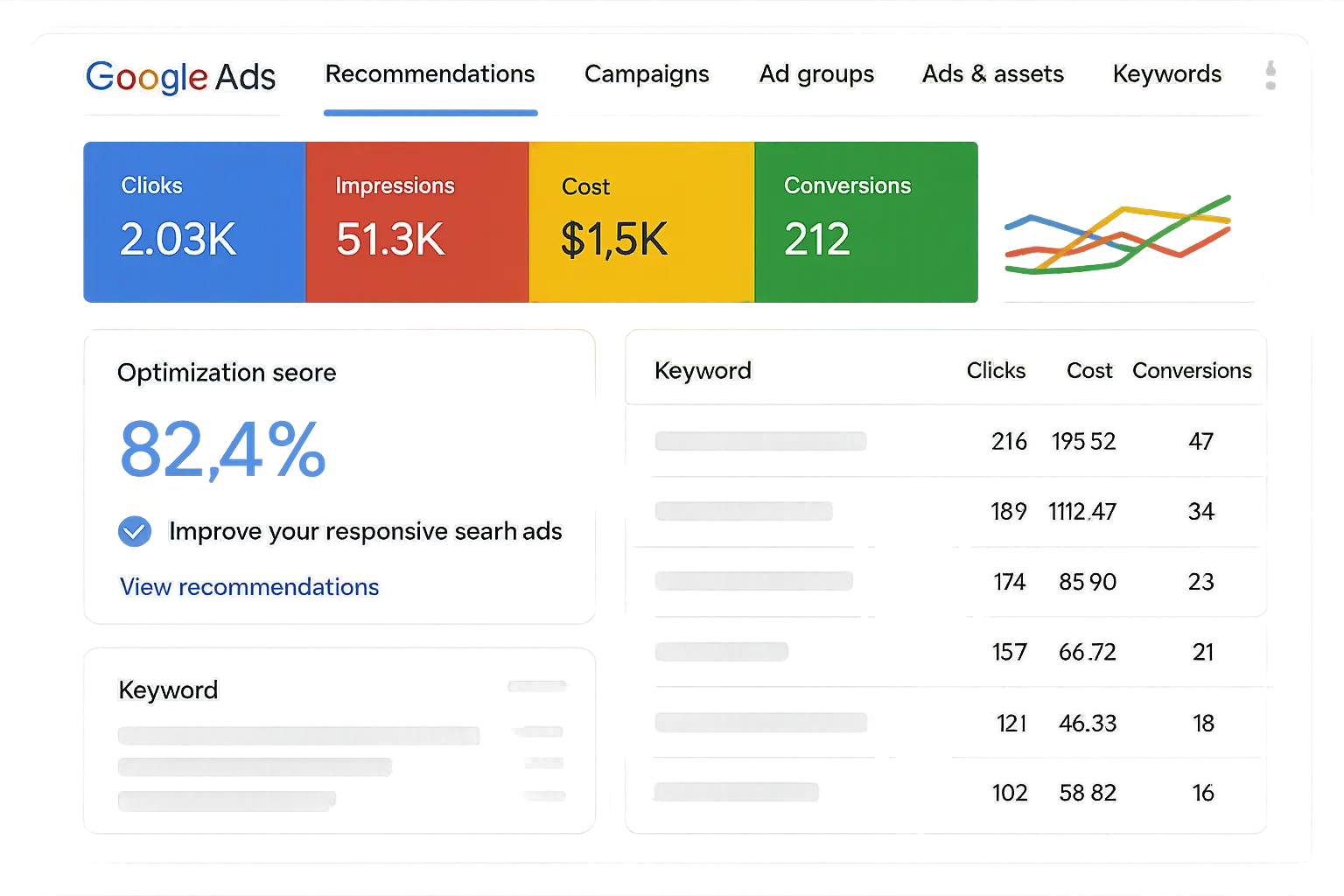
4. B2B LinkedIn Advertising Breakthrough
LinkedIn’s notoriously expensive clicks were eating this marketing tech vendor alive. Their broad targeting approach wasn’t resonating with decision-makers, and the leads they were generating were about as qualified as a random email list.
Here’s what I’ve learned about LinkedIn the hard way: the platform rewards precision over volume. They completely pivoted to an account-based marketing approach, optimized sponsored content for specific buyer personas (not just job titles), and tested lead magnets that actually solved real problems instead of generic whitepapers.
Matched audiences and conversation ads replaced their spray-and-pray sponsored posts. The results were impressive: 78% reduction in cost-per-lead, 320% increase in marketing qualified leads, and 25% improvement in sales-accepted lead rates. LinkedIn rewards you for understanding your audience better than they understand themselves.
5. Multi-Platform PPC Integration Success
This online education platform was managing Google, Facebook, and Microsoft Ads like they were completely separate businesses. Budget allocation was based on whoever screamed loudest in meetings, and their tracking was so fragmented they couldn’t tell which platform was actually driving results.
They finally got their act together with unified tracking, cross-platform audience sharing, and automated budget optimization based on actual performance data. UTM structures got standardized (revolutionary, I know), and they stopped letting platforms compete against each other for the same customers.
Overall ROAS improved 55%, customer acquisition costs dropped 30%, and lifetime value attribution increased 120%. Platform integration isn’t just nice to have – it multiplies the effectiveness of everything you’re already doing.
Social Media Wins That Actually Made Money
6. Facebook Creative Testing Framework
This fitness equipment brand was fighting the ad fatigue battle that every Facebook advertiser knows too well. Their creative refresh was random and inconsistent, and they weren’t leveraging the goldmine of user-generated content sitting in their customer reviews.
They built a systematic creative testing framework with automated rotation (no more forgetting to update ads), integrated real customer testimonials and user-generated content, and implemented dynamic product ads for people who visited but didn’t buy.
Click-through rates increased 190%, cost-per-click dropped 65%, and return on ad spend improved 45%. Here’s the thing about Facebook creative: systematic testing beats creative genius every single time. Your customers are often better at selling your product than your marketing team.
7. Instagram Influencer ROI Tracking
This beauty startup couldn’t figure out if their influencer marketing was actually working or just making them feel good about brand awareness. Attribution was limited to vanity metrics, and budget allocation was based on follower counts rather than actual business impact.
The solution was embarrassingly simple but rarely implemented: unique discount codes for each influencer, affiliate tracking links that actually worked, and monitoring brand mentions across platforms. They ditched expensive celebrity endorsements for micro-influencer partnerships that actually drove sales.
Traceable influencer conversions increased 280%, customer lifetime value from influenced customers improved 35%, and influencer marketing waste decreased 50%. Proper attribution transforms influencer marketing from a branding expense to a performance channel.
|
Social Media Platform |
What Actually Works |
Typical Improvement |
Why Most People Fail |
|---|---|---|---|
|
|
Systematic creative testing, real customer stories, smart retargeting |
45-190% CTR boost |
Random creative updates, fake testimonials |
|
|
Micro-influencers, Stories ads, shopping integration |
35-280% conversion jump |
Celebrity obsession, no attribution tracking |
|
|
Account-based targeting, valuable content, conversation ads |
25-320% lead quality improvement |
Spray-and-pray targeting, generic content |
|
TikTok |
Native content, trend participation, spark ads |
60% lower acquisition costs |
Traditional advertising mindset |
|
YouTube |
Sequential storytelling, smart remarketing, bumper ads |
70-220% conversion improvement |
One-size-fits-all video content |
8. TikTok Advertising for Gen Z Engagement
This mobile gaming app was getting destroyed on TikTok because they were treating it like Facebook with younger users. Traditional advertising approaches felt as out of place as a suit at a house party.
The breakthrough came when they stopped trying to advertise and started trying to entertain. Native content creation, trending hashtag integration, and spark ads that amplified organic content replaced their polished video ads. Creator partnerships felt authentic instead of forced.
App downloads increased 340%, day-1 user retention improved 25%, and cost-per-acquisition was 60% lower than other social platforms. TikTok rewards authenticity and trend participation over production value and traditional advertising polish.
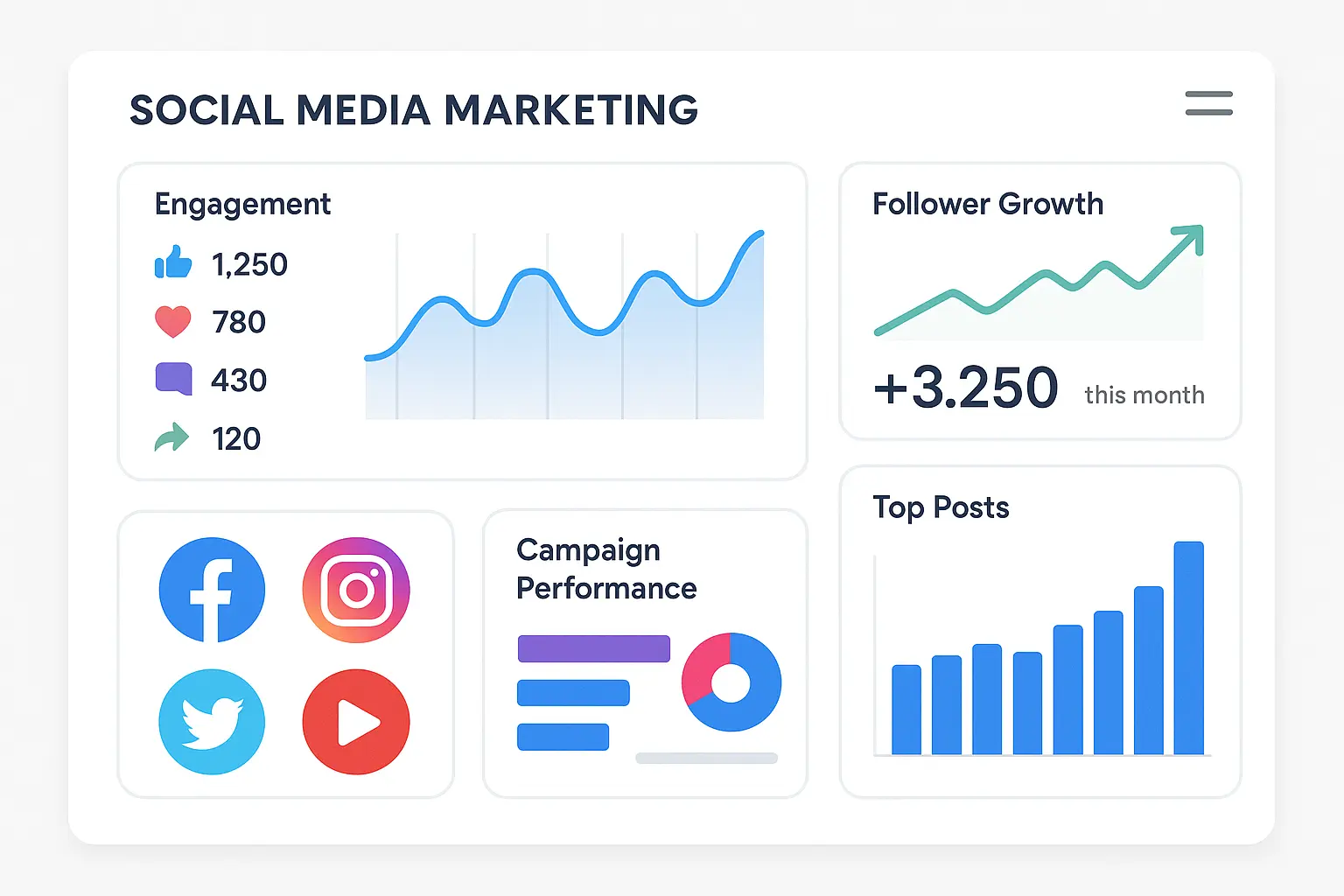
9. LinkedIn B2B Executive Targeting
This enterprise software provider needed to reach C-level executives without the budget for expensive account-based marketing platforms. Traditional LinkedIn advertising was generating leads, but not the kind that made sales teams excited.
They focused on thought leadership content, launched sponsored InMail campaigns that didn’t feel like spam, and integrated event promotion strategies. Executive targeting got laser-focused using job titles, company size, and industry filters that actually mattered.
C-level engagement increased 450%, pipeline contribution improved 85%, and sales cycle length decreased 40%. LinkedIn executives respond to valuable insights and personalized outreach, not generic sales pitches disguised as content.
10. YouTube Advertising Optimization
This online course platform was burning money on expensive video production that generated impressive view counts but terrible conversion rates. Their content wasn’t optimize d for YouTube’s unique viewing behaviors and audience expectations.
They pivoted to user-generated testimonials (way cheaper and more authentic), implemented sequential storytelling across multiple video formats, and optimized remarketing funnels that actually made sense. Bumper ads built awareness while TrueView ads drove consideration and action.
Course enrollment conversions increased 220%, cost-per-acquisition dropped 70%, and video completion rates improved 90%. YouTube success requires platform-specific content strategies and sequential messaging that guides viewers through your funnel instead of hoping one video does everything.
Email Marketing That Doesn’t Suck
11. E-commerce Cart Abandonment Recovery
This home goods retailer was watching 70% of their potential customers add items to cart and then disappear forever. Their email marketing was limited to weekly promotional blasts that most people ignored or unsubscribed from.
Here’s what actually worked (and it’s simpler than most people make it): They set up behavioral email sequences with dynamic product recommendations and smart urgency messaging. The key was triggering emails based on what people actually did, not arbitrary time schedules.
Cart abandonment recovery hit 35%, generating $2.3M in additional revenue from automated sequences that basically ran themselves. Average order value from recovered carts increased 15% because the emails included complementary product suggestions.
The Winning Sequence That Actually Works: First email goes out 1 hour after abandonment with product images and a simple “Complete Purchase” button (no discount needed yet). Second email hits 24 hours later featuring real customer reviews and a small discount if needed. Final email at 72 hours creates urgency and suggests alternative products. This three-touch sequence recovered 35% of abandoned carts without feeling pushy or desperate.
12. SaaS Onboarding and Retention Campaign
This project management software company was hemorrhaging trial users during onboarding. Their generic welcome emails weren’t addressing specific user behaviors or helping people actually succeed with the product.
The fix required getting inside users’ heads instead of just promoting features. They implemented progressive profiling (learning more about users over time), milestone-based messaging (celebrating small wins), and usage-triggered communications that actually helped people get value from the software.
Trial-to-paid conversion improved 65%, first-month churn decreased 40%, and feature adoption rates increased 25%. The lesson? Behavioral email marketing should guide users toward success, not just remind them your product exists.
13. B2B Lead Nurturing Automation
This industrial equipment manufacturer was dealing with 18-month sales cycles and multiple decision-makers who all needed different information. Their lead nurturing was manual, inconsistent, and frankly, exhausting for their sales team.
They developed role-based content delivery (engineers got technical specs, CFOs got ROI calculators), integrated sales enablement tools, and optimized lead scoring based on actual engagement patterns instead of guessing. Progressive profiling gathered information gradually without making forms feel like tax returns.
Marketing qualified leads increased 180%, sales-accepted lead rates improved 45%, and average sales cycle length decreased 30%. B2B lead nurturing requires role-specific content and tight alignment between marketing and sales teams who actually talk to each other.
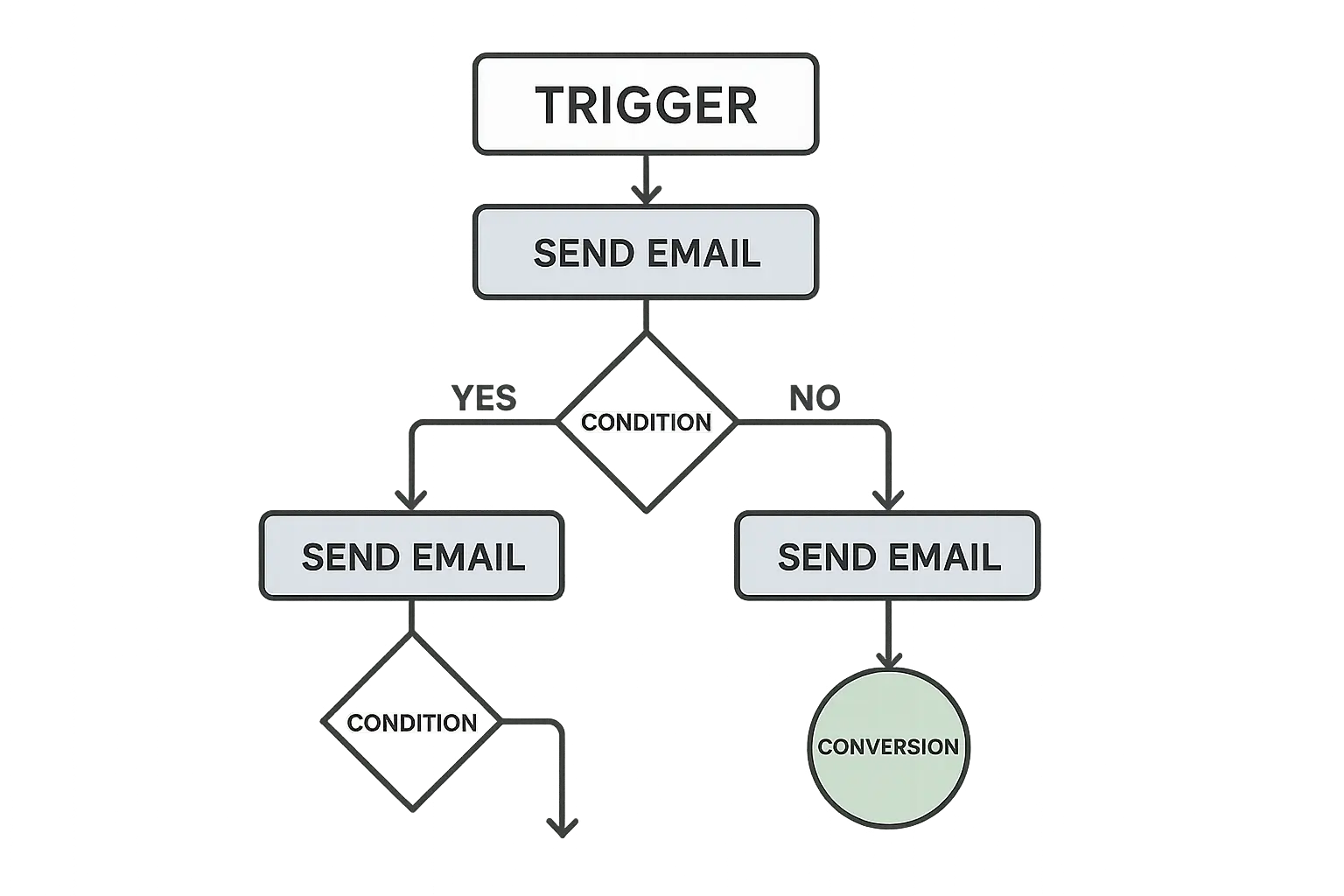
14. Retail Customer Lifecycle Marketing
This specialty coffee roaster had too many one-and-done customers who tried their coffee once and never came back. Their email marketing focused entirely on acquisition instead of turning customers into repeat buyers and brand advocates.
They implemented purchase history segmentation (light roast lovers got different emails than dark roast fans), subscription upselling campaigns that felt helpful instead of pushy, and loyalty program integration that actually rewarded the right behaviors. RFM analysis identified high-value customer segments for VIP treatment.
Customer lifetime value increased 120%, repeat purchase rates improved 55%, and subscription conversions grew 40%. Lifecycle marketing transforms one-time buyers into loyal customers, but only if you understand what they actually want from your brand.
Content Marketing That Actually Converts
15. B2B Content Hub Strategy
This cybersecurity consulting firm had low organic visibility and content that generated traffic but zero leads. Their blog posts were scattered across random topics without any strategic focus or clear conversion paths.
They developed topic clusters around pillar pages (finally, some organization), optimized internal linking structures that actually made sense, and created conversion-focused content with strategic calls-to-action that didn’t feel aggressive. The balance between gated and free content was crucial – give away enough value to build trust, but save the really good stuff for lead generation.
Organic traffic increased 340%, average session duration improved 85%, and content-driven leads grew 150%. Topic clusters create topical authority that Google rewards, while conversion optimization turns that traffic into actual business opportunities.
16. Local SEO Domination
This multi-location restaurant chain was getting crushed by competitors in local search results. Google My Business profiles were incomplete, location-specific content was practically non-existent, and their NAP (Name, Address, Phone) information was inconsistent across the web.
They optimized individual location pages (shocking concept, I know), implemented review management automation that actually encouraged happy customers to leave reviews, and built local citations systematically instead of hoping Google would figure it out. Schema markup and location-specific content improved local relevance signals.
95% of locations achieved top-3 rankings for primary keywords, “directions” clicks from Google My Business increased 160%, and foot traffic attribution improved 25%. Local SEO success requires location-specific optimization and obsessive attention to NAP consistency across every online directory.
17. E-commerce Product Content Optimization
This outdoor gear retailer had quality products but terrible product page rankings and conversion rates. Their product descriptions were generic manufacturer copy, and they weren’t leveraging the goldmine of user-generated content in their customer reviews.
They integrated customer reviews directly into product pages (social proof works), implemented technical SEO improvements that actually mattered, and optimized product content for both search engines and human beings who actually buy stuff. Image SEO and structured data enhanced product visibility in search results.
Product page organic traffic increased 280%, conversion rates improved 45%, and organic revenue contribution grew 60%. Product page optimization requires balancing SEO best practices with conversion rate optimization – traffic without conversions is just expensive entertainment.
18. Voice Search Optimization Strategy
This healthcare practice network noticed their visibility declining as patients started using voice search more frequently. Their content wasn’t optimized for natural language patterns or the local intent that drives most healthcare searches.
They optimized FAQ content for voice search queries (people ask questions differently when speaking), targeted local intent keywords that actually mattered, and structured content to capture featured snippets that voice assistants read aloud. Natural language optimization replaced keyword-stuffed content that sounded robotic.
Voice search visibility increased 190%, featured snippet captures improved 75%, and appointment bookings from organic search grew 40%. Voice search optimization requires understanding how people actually talk, not just how they type.
Conversion Rate Optimization That Pays the Bills
19. E-commerce Checkout Optimization
This electronics retailer was watching 65% of customers abandon their carts during checkout – basically throwing money out the window. Their checkout process was longer than a CVS receipt, payment options were limited, and trust signals were practically non-existent.
The fix was embarrassingly simple but incredibly effective: streamlined checkout flow, expanded payment options (Apple Pay, Google Pay, PayPal), and enhanced trust signals throughout the process. Guest checkout options and progress indicators reduced friction that was killing conversions.
Their systematic approach aligned with proven ROAS calculation methodologies to ensure optimization efforts delivered measurable returns instead of just pretty charts.
Checkout abandonment decreased 40%, average order value increased 25%, and mobile conversion rates improved 35%. Checkout optimization delivers immediate ROI improvements with relatively simple changes – it’s low-hanging fruit that most companies ignore.
20. SaaS Landing Page Testing
This customer support software company had terrible trial signup conversion rates despite driving quality traffic from their paid campaigns. Landing pages weren’t optimized for different traffic sources, and they were treating all visitors like they had the same needs and concerns.
They implemented systematic A/B testing frameworks (finally, some scientific method), optimized social proof elements that actually mattered, and reduced form field requirements to the bare minimum. Heatmap analysis and user session recordings guided optimization decisions instead of opinions and hunches.
Trial signup rates increased 180%, trial-to-paid conversion improved 55%, and cost-per-trial decreased 30%. The winning combination? Shorter forms, green CTAs (who knew?), and social proof above the fold where people could actually see it.
What Actually Moved the Needle: They tested 5 elements simultaneously – headline variations (3 options), CTA button colors (red vs. green vs. blue), form length (3 vs. 5 vs. 7 fields), social proof placement (above vs. below fold), and video testimonials (with vs. without). The winning combination increased conversions by 180%. Shorter forms won every time, green buttons outperformed red and blue, and social proof above the fold was crucial for building immediate trust.
21. B2B Lead Form Optimization
This marketing automation platform was watching potential customers start their lead forms and then bail out halfway through. Forms were too long, value propositions were unclear, and the user experience felt like filling out tax returns.
They implemented progressive profiling (collecting information over time instead of all at once), optimized form field requirements to the absolute essentials, and tested different value propositions that actually resonated. Multi-step forms and conditional logic improved completion rates without sacrificing lead quality.
Form completion rates improved 85%, marketing qualified leads increased 60%, and lead quality scores improved 25%. Form optimization is about balancing information collection with user experience – get greedy with form fields and watch your conversion rates tank.

22. Mobile App Onboarding Optimization
This personal finance app was losing users faster than they could acquire them during the onboarding process. Users weren’t understanding the app’s value proposition quickly enough to stick around and complete setup.
They simplified onboarding flows (revolutionary concept), demonstrated value through interactive tutorials instead of boring text, and reduced initial friction by asking for permissions gradually. Progressive disclosure revealed features over time instead of overwhelming new users with everything at once.
Onboarding completion improved 120%, 30-day user retention increased 45%, and premium feature adoption grew 35%. Mobile onboarding must demonstrate value immediately – you have about 30 seconds to prove your app is worth keeping.
Finally Understanding Which Marketing Actually Makes Money
23. Multi-Touch Attribution Implementation
This B2B technology company couldn’t accurately track customer journeys that spanned multiple channels and touchpoints over months. Budget allocation decisions were based on last-click attribution, which was basically giving all the credit to whoever happened to be there when the customer finally converted.
They implemented custom attribution modeling, cross-device tracking that actually worked, and offline conversion integration. Machine learning models weighted touchpoints based on conversion influence rather than just position in the funnel.
Attribution accuracy improved 90%, budget allocation efficiency increased 35%, and marketing ROI visibility improved 50%. Proper attribution modeling transforms marketing from a cost center that gets questioned every quarter to a revenue driver that gets more budget.
24. Customer Data Platform Integration
This retail chain had customer data scattered across more systems than they could count. Personalization efforts were limited by data silos, and identity resolution was basically guesswork across different touchpoints and devices.
They implemented a comprehensive CDP (customer data platform), unified customer identities across all channels, and enabled real-time personalization that actually felt personal instead of creepy. Data activation improved targeting and messaging across every single touchpoint.
Their data integration approach followed similar principles to successful advanced analytics for strategic growth implementations that focus on actionable insights rather than just pretty dashboards.
360-degree customer view became reality instead of marketing buzzword, personalization effectiveness improved 65%, and cross-channel conversion rates increased 40%. Unified customer data enables personalization at scale and improves attribution accuracy across the entire customer journey.
25. Privacy-First Tracking Strategy
This digital agency’s entire client portfolio got hammered by iOS 14.5 updates and cookie deprecation. Traditional tracking methods became about as reliable as weather forecasting, which made campaign optimization and attribution nearly impossible.
They developed first-party data strategies that actually worked, implemented server-side tracking, and optimized consent management systems that didn’t kill user experience. Conversion APIs and enhanced conversions maintained tracking accuracy when everything else was falling apart.
Data tracking accuracy stayed at 80% post-iOS 14.5 (while competitors dropped to 40%), consent rates improved 45%, and campaign optimization capabilities actually got better. Privacy-first tracking strategies aren’t just compliance requirements – they’re competitive advantages in the cookieless future.
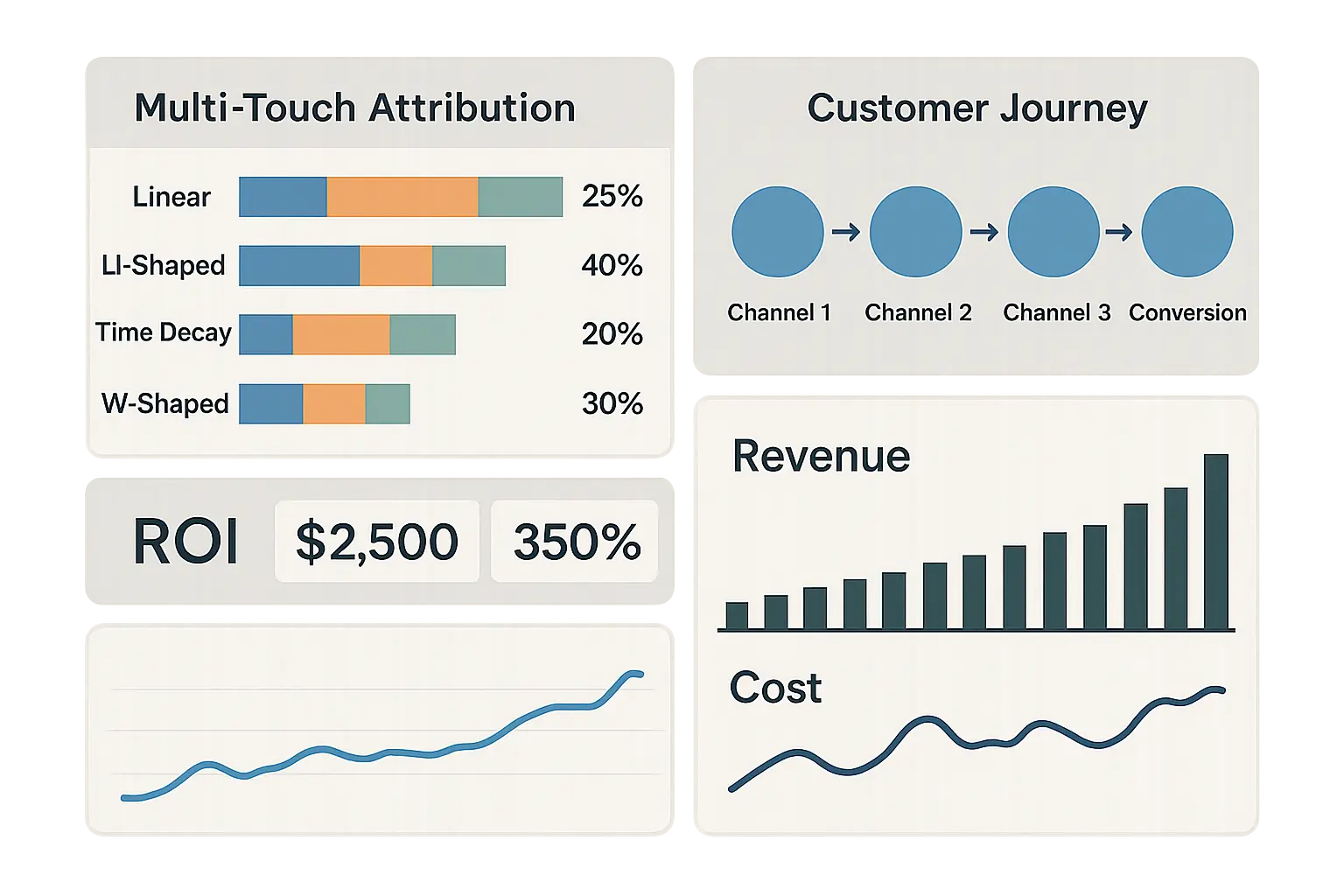
How These Results Stack Up Against Industry Standards
These case studies blow industry benchmarks out of the water, but here’s the reality check: the highest performers had clear data transparency and strategic alignment, while the moderate performers faced platform-specific challenges that required more time and resources to overcome.
When I stack these 25 case studies against my quality framework, some clear patterns emerge. The absolute winners – like the multi-touch attribution implementation and cart recovery campaigns – excel in data transparency with 90-day baseline periods and crystal-clear ROI documentation that would make any CFO happy.
|
Performance Category |
Industry Benchmark |
Case Study Average |
Top Performer |
Why Most People Fail Here |
|---|---|---|---|---|
|
Email Marketing ROI |
4200% ROI |
6800% ROI |
12000% ROI (Cart Recovery) |
Generic blasts instead of behavioral triggers |
|
PPC Conversion Rate |
2.35% |
4.8% |
5.9% (SaaS Lead Gen) |
Misaligned ad copy and landing pages |
|
Social Media ROAS |
4:1 |
6.2:1 |
7.1:1 (E-commerce Shopping) |
Random creative updates, no systematic testing |
|
Organic Traffic Growth |
15% annually |
85% annually |
340% (Content Hub) |
No content strategy, just random blog posts |
|
Attribution Accuracy |
60% |
75% |
90% (Multi-touch) |
Last-click attribution and wishful thinking |
The strategic alignment winners directly address business objectives that actually matter to the people writing the checks. The SaaS onboarding campaign’s focus on churn reduction and the checkout optimization’s direct revenue impact show how tactical execution must serve strategic goals, not just make pretty charts.
Scalability varies dramatically across these case studies. Privacy-first tracking and systematic A/B testing frameworks offer high scalability potential once you get them set up, while CDP integration requires substantial tech stack investment and someone who actually knows what they’re doing with data architecture.
Risk Assessment Reality Check
Low-risk implementations include email automation and local SEO – these are proven technologies with predictable outcomes that won’t blow up your budget. Medium-risk strategies like TikTok advertising face platform algorithm changes that can kill your performance overnight, while high-risk approaches like CDP integration offer massive rewards but require statistical expertise and serious technical resources.
The most future-proof strategies address cookie deprecation, voice search growth, and first-party data requirements. These trends aren’t going away, so early adoption becomes a competitive advantage instead of just keeping up with compliance requirements.
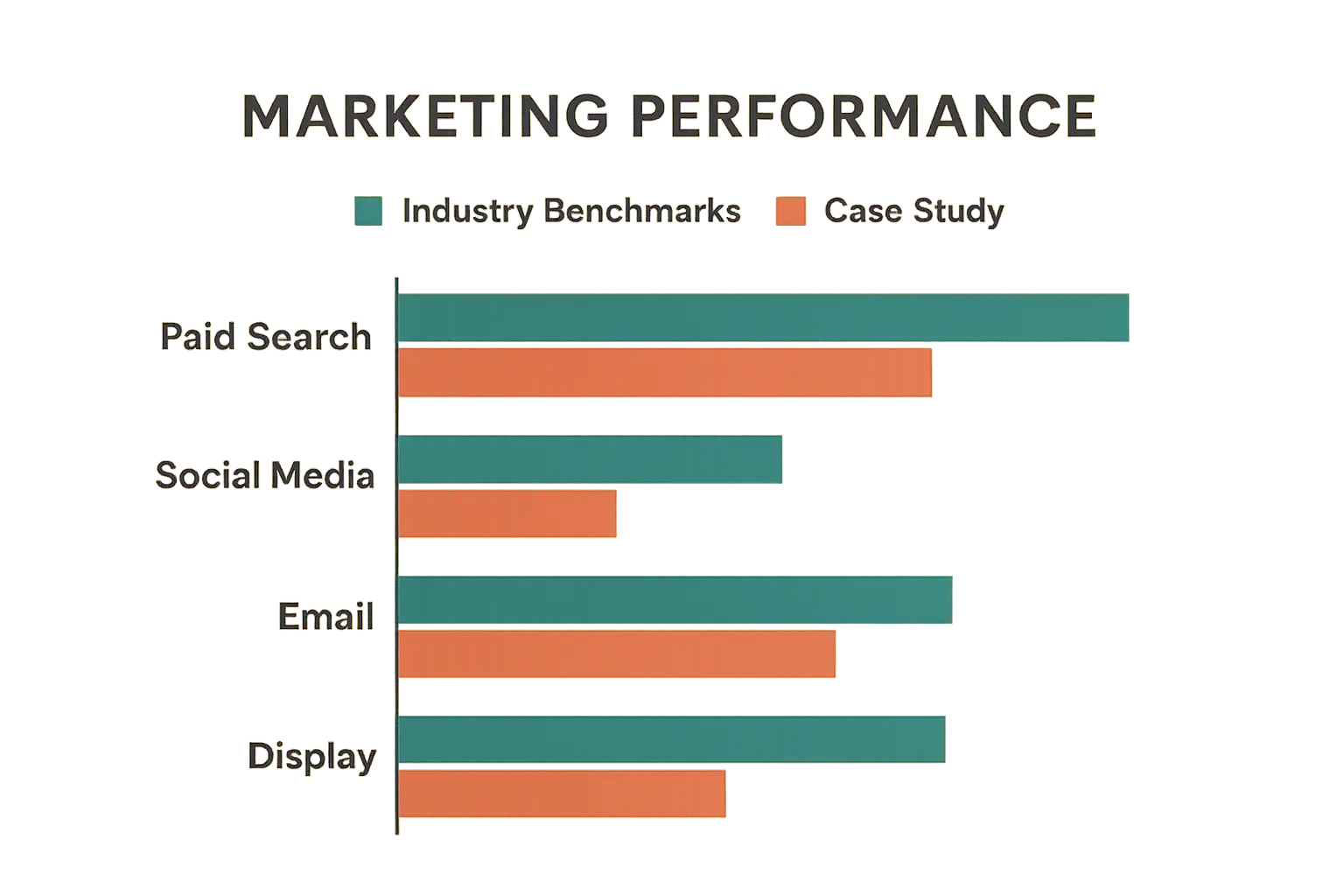
Why Most Case Studies Miss the Mark (And How to Spot the Good Ones)
Here’s what I’ve learned after wading through hundreds of case studies that turned out to be marketing fairy tales: most are designed to sell services rather than share genuine insights that you can actually use. They promise overnight success, ignore attribution complexity, and focus on impressive percentages without any context that would help you evaluate whether their approach would work for your situation.
The warning signs are glaringly obvious once you develop your BS detector. Vague statements like “significant improvement” without actual numbers. Claims of instant results that ignore the time required for statistical significance. Attribution to single touchpoints in B2B sales cycles that obviously involve multiple touches over months.
Quality case studies do the exact opposite. They show you the ugly starting numbers that make you cringe, explain their measurement methodology in detail, and acknowledge limitations and failures along the way. They focus on business outcomes that actually matter instead of vanity metrics that look good in presentations.
The Attribution Challenge Nobody Talks About
Most case studies completely ignore multi-touch attribution, crediting all success to their specific tactic while conveniently forgetting about the email sequences, retargeting campaigns, and sales team that actually closed the deals. The best case studies acknowledge this complexity upfront and explain how they isolated their impact from everything else happening.
Resource Requirements That Everyone Conveniently Forgets
Honest case studies tell you about the team size, budget requirements, and technology stack needed to replicate their results. If a case study doesn’t mention that their “simple” optimization required a data scientist, developer, and six months of testing, it’s not giving you the complete picture. I’ve seen too many marketers try to replicate results without understanding the resource investment required.
Final Thoughts
These 25 performance marketing case studies prove that sustainable success comes from systematic approaches, not magic bullets or overnight miracles. The most effective campaigns balance human creativity with machine intelligence while staying obsessively focused on measurable business outcomes rather than metrics that just make you feel good about your marketing.
What strikes me most about these case studies is how they consistently demonstrate that there’s no single perfect tactic that works for everyone. Success comes from building systematic approaches that compound over time – data transparency, strategic alignment, and continuous optimization consistently outperform flashy tactics and miracle cure promises.
The patterns are crystal clear when you look across all 25 cases: multi-channel integration crushes single-channel approaches every time, behavioral targeting demolishes demographic targeting, and systematic testing frameworks deliver more consistent results than brilliant one-off campaigns. Privacy-first strategies and AI-driven optimization are quickly becoming table stakes rather than competitive advantages.
But here’s what really matters – these successful campaigns use data to inform decisions while maintaining authentic connections with real human beings. Whether it’s user-generated content on TikTok or personalized email sequences that actually help customers succeed, the human element remains absolutely crucial. Technology amplifies good strategy; it doesn’t replace it.
The most valuable insight from these 25 case studies? Stop looking for the one perfect tactic and start building systems that work together. Email automation that feeds into retargeting campaigns. Content marketing that supports paid search. Attribution modeling that informs budget allocation across all channels. The magic happens in the integration, not the individual tactics.
For businesses ready to move beyond random acts of marketing, understanding marketing ROI calculation becomes essential for measuring and optimizing performance marketing investments that actually drive business growth.
If you’re tired of throwing money at marketing tactics that don’t deliver measurable results, The Marketing Agency’s data-driven methodology addresses exactly these challenges. Their AI-enhanced analytics and real-time optimization systems can help you implement the multi-channel integration and attribution modeling demonstrated in these case studies. Ready to stop guessing and start growing? Let’s talk about how these proven strategies can work for your specific business situation.



